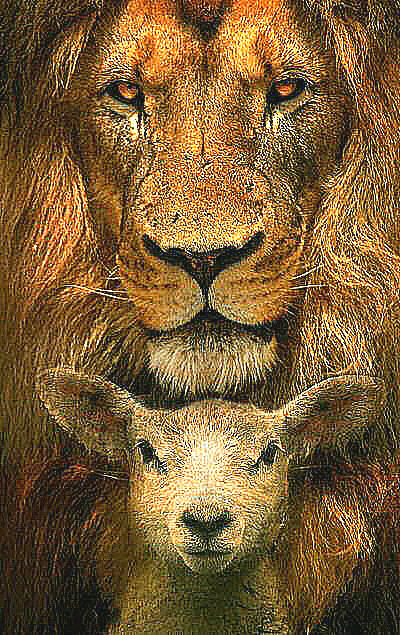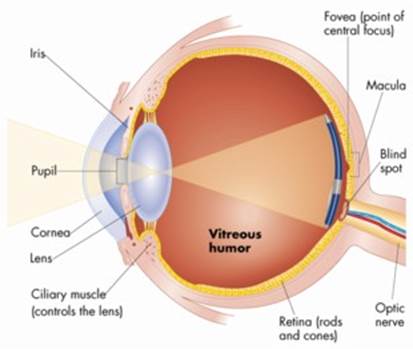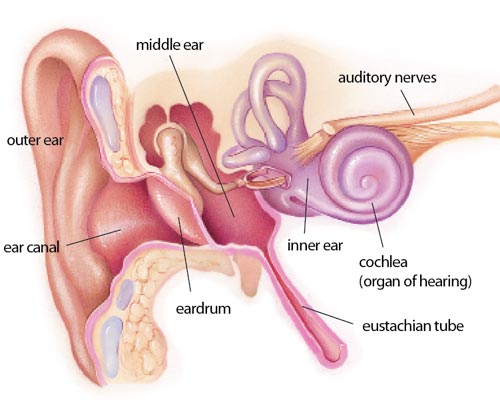
| Home | Our Hope | |
| Bible Study |

|
July 13, 2014 |
| Evolution and the Eye | ||
Evolution is the source of continuous attacks against Judaism and Christianity and particularly against the truth of the Bible. Therefore it is important that Christians and Jews have some understanding of Evolution and the claims that it makes that are different from the Bible. Evolution, however, can be a complicated topic when studied in detail but at simpler levels it isn't difficult to understand the basics.
Along with that basic understanding of Evolution there can be a basic understanding of the problems that exist in Evolution. It turns out that there are huge numbers of problems with Evolution. Not surprisingly, we never hear about those problems and instead we only hear that Evolution is proven science. In this lesson we'll look at Evolution and a couple examples of problems that Evolution has.
The foundation of Evolution is the idea that a random change in the genetic code of an animal can result in a change to the animal that gives it an advantage in reproduction over other animals of its kind. Therefore this beneficial change results in the animal having more offspring than other animals and their offspring also have more offspring. After a while the animals with the beneficial change have out bred the others and the population contains mostly animals with the beneficial change. So in summary a beneficial change in one animal can, through an advantage in reproduction, over many generations, become a change that most or all remaining animals share.
As an example, imagine an animal that had a random genetic change that gave it legs that could run faster. Because of that change the animal was able to catch its prey better. Because of that it was able to live longer and be healthier. Because of that it was able to have more children who carried on this characteristic. These children would also do better and those without the characteristic would do worse. After a while only the ones with that characteristic would exist
How would this random genetic change happen? It actually does happen very frequently. Sometimes the cellular copy mechanisms in the body make a mistake and produce a copy of a gene that is not what it is supposed to be. Sometimes radiation from inside the earth or from space can enter a body and strike something in the cellular system that results in bad copies.
The problem with changes like this is that they almost always result in a developmental failure. Sometimes the cells that would become this modified baby start forming so badly because of the change that the body aborts them, often before the mother is even aware that she is pregnant. Sometimes the baby dies later on before it is born. Sometimes the baby is born but can't live outside the womb. Sometimes the baby, now an adult, is defective in a way that makes it impossible to reproduce. So the vast majority of changes that can happen randomly do not result in an animal that can reproduce and so the change cannot carry on. Neither should it carry on because the change is a detrimental change.
There are a huge host of problems with every aspect of Evolution but we'll look at just one type here. That is the problem of complex features of the body that have many parts but that could only provide a reproductive benefit if the feature was complete, if all the parts were present and functioning correctly. The example we'll start with is the eye.

Eyes are extremely complex devices. We don't fully appreciate how intricate and delicate they are. If we did I think we would take better care of them. A person who is blind doesn't appreciate this either but he certainly appreciates how difficult life is without eyes.1
Without eyes, or without the help of someone else, we would bump into things all the time and would be defenseless. So there is plainly a reproductive advantage to having functioning eyes.
These are all the pieces that make up the human eye:
Iris - the Iris controls how much light gets into your eye. If you are looking at something very bright it would overload your eyes and you wouldn't be able to see it. So the Iris closes down to reduce the amount of light.
Iris muscle - In order for the Iris to close down it needs to have a little muscle to work the iris, to make it close down.
Lens - the Lens controls the point where your eye is focused. To see things that are close the shape of the lens has to be adjusted a little. The Lens must be made of a clear flexible material, which seems like an obvious statement. But nowhere else in your body is another transparent material used. It also has to be very close to a specific shape. If it is out just a little you will need glasses. If it is out too much or misshaped in any way you will never be able to see anything but blurry images
Lens muscle - the Lens muscle changes the shape of the Lens. It is controlled by your brain so that if you want to focus on one thing, the brain commands the muscle to change the shape of the lens.
Retina - the Retina is the light sensitive material in your eye. It is made of Rods and Cones in the human eye, which gives us color vision, but most animals only have Rods and do not have color vision. There are about 120 million of these in the retina. The Rods and Cones are not scattered randomly through the retina. There is a definite plan to where each goes. Red and Green sensitive Cones go in the center of the field of view and Rods and blue sensitive Cones mostly go outside of that.
Blood flow - all the cells in the eye ball need to have blood to bring them oxygen or they will die. There are very small blood vessels all around the eyeball.
Optic Nerve - Each one of these Rod and Cone light sensors is attached to a little "optical wire" that carries the sensor's signal to the brain.
Brain - The Brain is where the magic happens. The Brain somehow sorts out these optical signals from Rods and Cones that are positioned around the retina and turns them into an image so that we can understand what all the objects are in the image.
So the point of this list of amazing parts of the eye is to make a list of the parts that are absolutely necessary to have sight and therefore get the reproductive advantage of sight. The very smallest and most primitive eye exists on something called a Dinoflagellate. That little beasty is 50 μm across which is far far smaller than your eye can see. Yet it has a simple eye.
Its eye has the equivalent of an iris and iris muscle, and it has a lens, a retina, an optic nerve, and a brain that is capable of processing the image. So we can accept that microscopic eye as the minimum components needed in order to have a functioning visual system. The problem for Evolution is that an eye cannot be created by a single genetic change. A large number of genetic changes are required to produce a functioning eye. If you don't have all the changes then you don't have all the parts or they don't function correctly or aren't made of the correct material to work.
If you have only one or some of the parts, the eye does not function at all and there is no reproductive advantage to the eye. You must have all the parts to get the advantage.
The result is that so many genetic changes are needed to produce a functioning eye that the chance of them occurring together randomly, even if there were billions of years during which to wait for it to happen, that it would not happen.
According to evolutionists color vision was a later development in Evolution. The problem here is that the change to color vision had to have a reproductive advantage in order to spread throughout the population. Yet, no one is clear on what the reproductive advantage of color vision would be. Those Cones that give us color vision are much larger than the rods and less sensitive to light. Adding one cone takes up the space where 1000s of rods could be. So to get color vision the animal must give up some sharpness of vision and some ability to see clearly at night. Because of the trade-off it seems like the advantage might be wiped out by the disadvantage. What little advantage might be left over would be too small to make a difference when mixed with all the other factors that contribute to reproductive advantage.

The human ear is also a complex organ. Like the eye it is also an organ that is made of many parts that are required for it to work at all.2
Eardrum - the Eardrum is a membrane that allows sound into the ear by converting vibrations of the air into vibrations of the two bones that are connected between the eardrum and the inner ear. Without these two bones you would be deaf.
Inner Ear - the Inner Ear catches the vibrations from the two bones and passes them into the Cochlea
Cochlea - the Cochlea contains little fibers that are tuned to different frequencies. Each of these respond when the sounds coming into your ear are at their frequencies. So the Cochlea breaks all the combinations of frequencies in the air vibrations into individual frequency signals.
Auditory Nerves - the Auditory Nerves carry all these frequency signals to the brain
The Brain - the Brain takes all the frequency signals and processes them into voices, and words, and sounds, and identifies what made the sounds and the locations of the sounds.
The Brain also does another trick with the ear. The three looping structures above the inner ear are also filled with hairs and fluid. As you turn your head in any direction the fluid moves one way or the other in these tubes and the hairs detect the movement and this information is also sent to the brain. This is one of the ways the brain helps you keep your balance. This can also be associated with motion sickness in some people.
As we saw with the eye, there is a significant reproductive advantage to having the function, in this case hearing. The function however is complex and made of many pieces, all of which are required to have the function. Many genetic changes are required to go from an animal that doesn't have hearing to one that does. In fact there are so many that they couldn't have happened by random changes.
Evolutionists believe that complex organs started as very simple organs and over time these evolved into the complex organs that we see today. Therefore an impossibly large number of simultaneous random changes wouldn't be required to create the organ. Instead only a sequence of random changes is needed with each change making the organ a little better and giving the owner a competitive advantage. As we've seen with the eye and ear in this lesson, though, it isn't possible for some of our organs to have developed this way. Even the most simple eye or ear is a very complex structure that would have required a large number of changes and would have given the owner no benefit unless all of them happened at the same time. But that many changes can't happen at the same time randomly.
It says in Psalm 139:14 "I praise you because I am fearfully and wonderfully made; your works are wonderful, I know that full well." We are right to be amazed at these bodies. The complexity and intricacy are beyond our understanding. When we watch the abilities of athletes, gymnasts, mountain climbers, and others it sometimes stuns us what the body can do and withstand.
But God's perspective on these bodies we wear is different. They are nothing to him. They came from dust and they will go back to dust. God is in love with you, not your body.
Yet in this time these are the bodies we wear. The Evolutionists want to explain them as nothing more than a combination of random changes that proved beneficial. We know this isn't true and these bodies are in fact the proof that there is a creator.
1 http://www.astro.virginia.edu/class/oconnell/astr1230/human-eye.html
2 Image from http://www.nlm.nih.gov/medlineplus/magazine/issues/fall08/articles/fall08pg12a.html